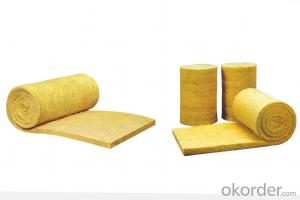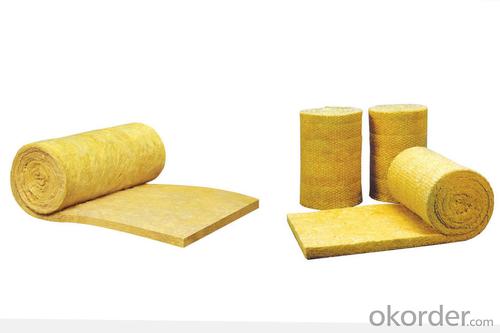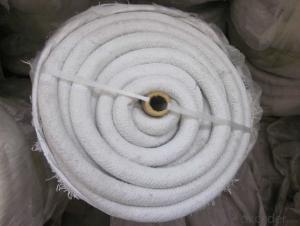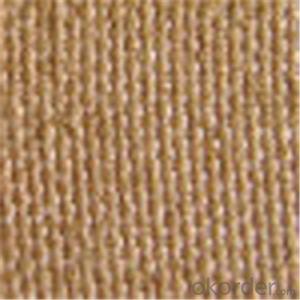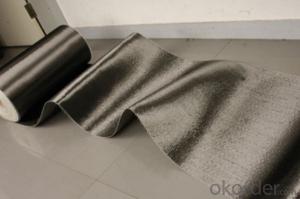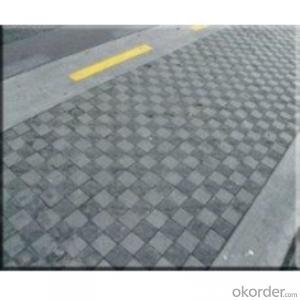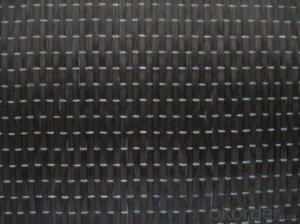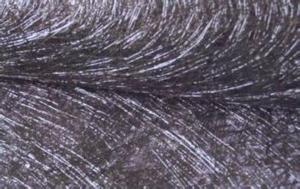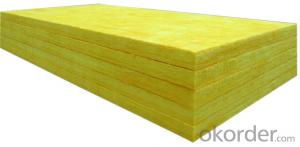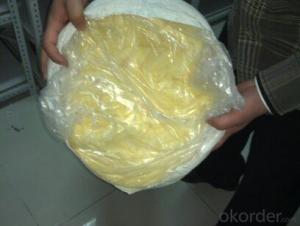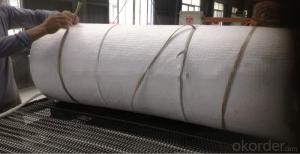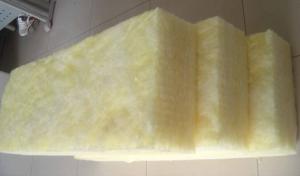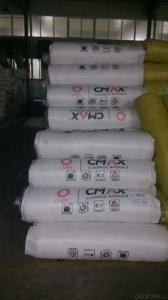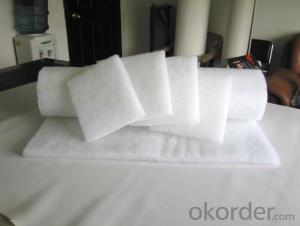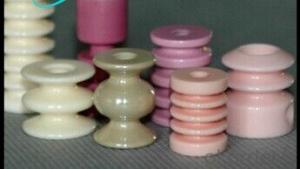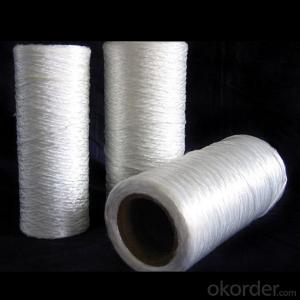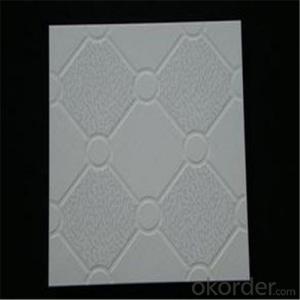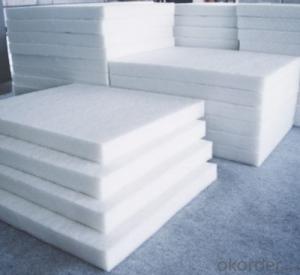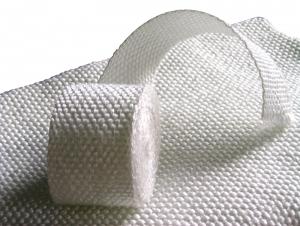Glass Fiber Textiles Thermal Insulation Wool Blankets
- Loading Port:
- Qingdao
- Payment Terms:
- TT OR LC
- Min Order Qty:
- 5000 m.t.
- Supply Capability:
- 10000 m.t./month
OKorder Service Pledge
OKorder Financial Service
You Might Also Like
Specifications
1.cheap wool blankets
2.Sound absorption and noise reduction
3.Easy for construction
4.Grade A1 fireproof
Advantages and features about glass fiber thermal insulation cheap wool blankets in china
1. excellent thermal insulation--very low thermal conductivity coefficients
2. excellent acoustic insulation--can reduce noise and sound transmitting
3. non-corrisive, durable
4. moisture resistant, fire resistant
5. good strength to resist deformation
Item | glass fiber thermal insulation cheap wool blankets in china |
Material | Main raw material: glass |
Application | Wall inslation, ceiling, roofing, heat insulation, iron air conduct, building and construction project, air conditioner, refrigeration equipment, damping, sound absorption and noise reduction, boilers, reaction vessels, tanks, ducts, high temperature workshop and chemical industries, so on. |
Size | Volume weight: 10-72 kg/m3 Thickness: 25-100mm Length: 3-20m Width: 1200mm |
Highest Usage Temperature | 450C |
Heat Conduct Coefficient | 0.045-0.032 W/mk |
Hydrophobic | >98.5 |
Incombustibility | Qualified Grade A |
Color | Yellow, White, Pink |
Packing | Chinese standard vacuumized woven bag or as your design |
Delivery time | Within 3-7 days |
Port of loading | China main port |
- Q: How do glass fiber textiles affect the breathability of masks or respirators?
- The breathability of masks or respirators can be significantly influenced by glass fiber textiles. These textiles possess exceptional filtration properties, allowing them to effectively capture and block small particles, including airborne contaminants and pathogens. Consequently, they are widely chosen for the production of masks and respirators due to their high level of protection. However, the dense nature of glass fiber textiles can also impede the breathability of masks or respirators. The tightly woven fibers create a barrier that makes it more challenging for air to pass through. Consequently, wearing these masks may result in increased resistance during breathing, making it less comfortable for the wearer. To tackle this issue, manufacturers often integrate additional features into the design of masks or respirators utilizing glass fiber textiles. For example, they may incorporate exhalation valves or vents that facilitate smoother airflow out of the mask, thereby reducing breathing resistance. This ensures a balance between filtration efficiency and breathability. It is crucial to acknowledge that although glass fiber textiles can affect breathability, they play a vital role in delivering effective protection against airborne particles. The filtration capabilities of these textiles are essential in preventing the inhalation of harmful substances. Manufacturers strive to optimize the design and construction of masks or respirators to achieve a harmonious blend of breathability and filtration efficiency, guaranteeing the wearer's comfort and safety.
- Q: Can glass fiber textiles be used in the automotive industry?
- Glass fiber textiles, also known as fiberglass, find their application in the automotive industry. These textiles possess several properties that render them suitable for use in automobiles. Firstly, fiberglass is both lightweight and strong, making it an ideal choice for components in need of durability and reduced weight, such as car body panels and interior trim. Moreover, fiberglass exhibits exceptional thermal insulation properties, making it beneficial for parts requiring heat resistance, such as engine covers and exhaust components. Additionally, fiberglass resists corrosion, chemicals, and UV radiation, ensuring its longevity and durability in demanding automotive environments. Lastly, fiberglass easily takes on complex shapes, enabling the production of intricate automotive parts. All in all, glass fiber textiles offer countless advantages, making them an invaluable material in the automotive industry.
- Q: Can glass fiber textiles be used in medical applications?
- Yes, glass fiber textiles can be used in medical applications. Glass fiber textiles are known for their high strength, durability, and resistance to chemicals, making them suitable for various medical applications. They are commonly used in surgical gowns, drapes, and other protective clothing due to their ability to provide a barrier against liquids and pathogens. Glass fiber textiles are also used in wound dressings and bandages, as they can provide support, promote wound healing, and allow for breathability. Additionally, they are used in prosthetics and orthotics to provide stability and reinforcement. However, it is important to note that glass fiber textiles can cause irritation or allergic reactions in some individuals, so careful consideration should be taken when using them in direct contact with the skin. Overall, glass fiber textiles have proven to be beneficial in medical applications due to their unique properties and versatility.
- Q: How durable is glass fiber textile?
- Glass fiber textile possesses exceptional durability, renowned for its ability to withstand wear, tear, and environmental factors. By combining glass fibers with textile construction, a highly resistant material is created. This fusion of materials provides strength and stability, rendering it an optimal selection for situations requiring durability. Glass fiber textile exhibits unmatched resistance to moisture, chemicals, and UV rays, enabling it to maintain its structural integrity even in demanding conditions. Additionally, it boasts remarkable fire resistance, ensuring safety across diverse industries. Moreover, glass fiber textile demonstrates excellent dimensional stability, preventing easy stretching or shrinking. This attribute guarantees that the material retains its shape and size, even after prolonged usage. Furthermore, glass fiber textile showcases remarkable resistance to abrasion, enduring repeated friction and contact with other surfaces without suffering damage. All in all, glass fiber textile stands as a highly durable choice, capable of withstanding the test of time in a variety of applications. Whether employed in construction, automotive, aerospace, or any other industry, its exceptional durability renders it a dependable option.
- Q: How do glass fiber textiles perform in terms of weight?
- Glass fiber textiles are known for their lightweight nature. They have a very low weight-to-strength ratio, making them highly advantageous in applications where weight reduction is crucial, such as aerospace and automotive industries.
- Q: Can glass fiber textiles be used in the fashion industry?
- Yes, glass fiber textiles can be used in the fashion industry. Glass fiber textiles, also known as fiberglass textiles, are made from woven strands of glass fibers. These textiles are known for their strength, durability, and heat resistance. In the fashion industry, glass fiber textiles are primarily used for creating unique and innovative designs. They can be used to make clothing, accessories, and even footwear. One of the main advantages of glass fiber textiles in fashion is their ability to create lightweight and breathable garments. Despite their strength, glass fiber textiles are usually much lighter than traditional fabrics such as cotton or polyester. This makes them ideal for creating garments that are comfortable to wear while still providing structural support. Glass fiber textiles also offer a wide range of design possibilities. They can be molded into different shapes and patterns, allowing fashion designers to create intricate and complex designs. Glass fiber textiles can also be combined with other materials such as fabrics, metals, or plastics to create unique textures and finishes. Furthermore, glass fiber textiles have excellent mechanical properties, making them ideal for creating fashion pieces that require stability and structure. For example, glass fiber textiles can be used to create corsets, bodices, or other garments that need to maintain their shape. However, it is important to note that glass fiber textiles have some limitations. They are not as flexible as traditional fabrics, which can restrict movement in certain garments. Additionally, glass fiber textiles may not be as comfortable to wear directly against the skin, so they are often used in combination with other materials to provide comfort. In summary, glass fiber textiles can indeed be used in the fashion industry. Their strength, durability, and unique design possibilities make them a valuable material for creating innovative and eye-catching fashion pieces.
- Q: Can glass fiber textiles be treated with flame retardants?
- Indeed, flame retardants can be used to treat glass fiber textiles. Flame retardants are substances that are applied to materials in order to decrease their flammability and inhibit the rapid spread of fire. Although glass fiber textiles possess inherent fire-resistant properties due to the nature of glass, the application of flame retardants can offer an additional layer of fire protection. By treating the textiles with flame retardants, the fabric becomes less susceptible to ignition and combustion, rendering it more resilient against flames and reducing the likelihood of fire-related incidents. This proves especially advantageous in situations where fire safety is of utmost importance, such as in the production of protective clothing, curtains, upholstery, and other textile products that must adhere to specific fire safety regulations.
- Q: Are glass fiber textiles resistant to UV radiation?
- Yes, glass fiber textiles are generally resistant to UV radiation. Glass fibers are made from inorganic materials and do not degrade or deteriorate when exposed to sunlight. They have excellent UV resistance properties, which make them suitable for outdoor applications. Glass fiber textiles are commonly used in industries such as aerospace, automotive, construction, and marine, where they are exposed to the sun's UV rays for extended periods of time. Additionally, glass fiber textiles are also resistant to other environmental factors such as moisture, chemicals, and high temperatures, making them a durable and reliable choice for various purposes.
- Q: Mattress, bamboo fiber fabric and short plush fabric, that's always good
- In the summer, I think bamboo fiber fabric is good.The bamboo fiber mattress adopts natural bamboo fiber extracted from natural growth bamboo (i.e. bamboo fiber), and is made into a mattress made by the high-tech processing and according to the human sleep habit. Bamboo fiber mattress is superior to other fibers in antibacterial, deodorizing, anti mite, UV, pigmentation, anti elasticity, draping and abrasion resistance, and it is quick and breathable
- Q: How do glass fiber textiles resist chemicals?
- Glass fiber textiles resist chemicals due to the inherent properties of glass, which is highly resistant to corrosion and chemical reactions. Additionally, the manufacturing process of glass fiber textiles involves coating the fibers with a protective finish, further enhancing their resistance to chemicals. This combination of glass's natural resistance and the additional protective coating enables glass fiber textiles to withstand exposure to a wide range of chemicals without deteriorating or losing their structural integrity.
Send your message to us
Glass Fiber Textiles Thermal Insulation Wool Blankets
- Loading Port:
- Qingdao
- Payment Terms:
- TT OR LC
- Min Order Qty:
- 5000 m.t.
- Supply Capability:
- 10000 m.t./month
OKorder Service Pledge
OKorder Financial Service
Similar products
Hot products
Hot Searches
Related keywords
